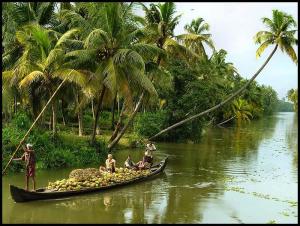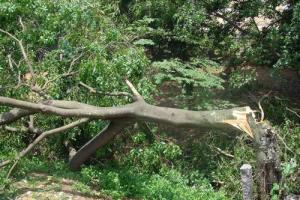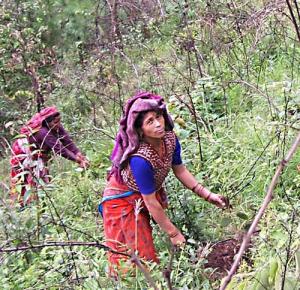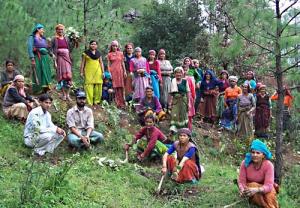India’s unique topography, terrain, climate and vegetation, brings out natural diversity that cannot be witnessed anywhere else in the world. One such variation is also present in India’s wild-forested regions. Forests in India have always been one of the richest resources. Indian forests are ancient in nature and composition.
INDIAN FORESTS
 India’s unique topography, terrain, climate and vegetation, brings out natural diversity that cannot be witnessed anywhere else in the world. One such variation is also present in India’s wild-forested regions. Forests in India have always been one of the richest resources. Indian forests are ancient in nature and composition.
India’s unique topography, terrain, climate and vegetation, brings out natural diversity that cannot be witnessed anywhere else in the world. One such variation is also present in India’s wild-forested regions. Forests in India have always been one of the richest resources. Indian forests are ancient in nature and composition.
The people honoured the forests and a large number of religious ceremonies centred on trees and plants. The Agni Purana, written about 4000 years ago, stated that man should protect trees to have material gains and religious blessings. Chandra Gupta Maurya who came to power around 300 B.C appointed a high officer to look after the forests that wild animals and forests should be preserved and protected. He launched programmes to plant trees on a large scale.
The forests acted as a refuge to people during the Musilm rule. People fled from their home and took refuge in these forests. The Muslim invaders were all very keen hunters and therefore it was necessary for them to have patches of forests where they could go hunting. This ensured that the trees in these hunting areas were not felled, and the forest ecology was not tampered with.
 Then came the British period – During the early part of the British rule, trees were felled without any thought. Large numbers of trees such as the sal, teak, and sandalwood were cut for export. These forests were the richest resources for the British colonies. In 1806, the Madras government appointed Capt. Watson as the commissioner of forests for organizing the production of teak and other timber suitable for the building of ships. The post of a conservationist was created and this term was related to the patches of forests that they managed, called conservancies, and was not related to biodiversity conservation. Even today, vast tracts of Indian forests are covered with teak plantations, low in biodiversity and seasonally ravaged by forest fires.
Then came the British period – During the early part of the British rule, trees were felled without any thought. Large numbers of trees such as the sal, teak, and sandalwood were cut for export. These forests were the richest resources for the British colonies. In 1806, the Madras government appointed Capt. Watson as the commissioner of forests for organizing the production of teak and other timber suitable for the building of ships. The post of a conservationist was created and this term was related to the patches of forests that they managed, called conservancies, and was not related to biodiversity conservation. Even today, vast tracts of Indian forests are covered with teak plantations, low in biodiversity and seasonally ravaged by forest fires.
Another area of interest was the introduction of plants of economic importance to India. Many of these introductions were tried in botanical gardens at Sibpur, Poona, Madras and Saharanpur. The Chinese monopoly on tea was ended when tea was introduced in Darjeeling and Sri Lanka.
Between the two wars, great advancements in scientific management of the forests were made, with many areas undergoing regeneration and sustained harvest plans being drawn up.
A great upheaval in the Forestry organization in India came with the independence of India in 1947. The princely states were managed variably, giving more concessions to the local populations. The transfer of these states to the government led to deforestation in these areas.
The new Forest Policy of 1952 recognized the protective functions of the forest and aimed at maintaining one-third of India’s land area under forest. Certain activities were banned and grazing restricted. In 1976, the governance of the forest came under the concurrent list. `Development without destruction` and `forests for survival` were the themes of the next two five-year plans, aiming at increasing wildlife reserves and at linking forest development with the tribal economy.

India’s long-term strategy for forestry development reflects three major objectives:
ª to reduce soil erosion and flooding;
ª to supply the growing needs of the domestic wood products industries; and
ª to supply the needs of the rural population for fuel wood, fodder, small timber, and miscellaneous forest produce.
The commission itself worked on the first two objectives, emphasizing traditional forestry and wildlife activities; in pursuit of the third objective, the commission recommended the establishment of a new kind of unit to develop community forests. Both individual farmers and tribal communities were also encouraged to grow trees for profit.
The National Forest Policy of 1988 further emphasized on the role of India’s forests in the National economy and ecology. It focused on ensuring environmental stability, restoring the ecological balance, and preserving the remaining forests. A new target was to increase the forest cover to 33 percent of India’s land area from the then-official estimate of 23 percent.
Better late than never- people have realized that deforestation threatened not only the ecology but also their livelihood in a variety of ways. Thus, people have become more interested and involved in conservation. The Chipko movement in India was the best-known popular activist movement, wherein local women decided to fight the government and the vested interests to save trees. This movement took place in Uttar Pradesh where women literally ‘stuck to’ or ‘chipko’ to the trees, and would not let the manufacturers cut them down. The movement has slowed down the process of deforestation, exposed vested interests, increased ecological awareness, and demonstrated the viability of people power.
India possesses a distinct identity, not only because of its geography, history and culture but also because of the great diversity of its natural ecosystems. The panorama of Indian forests ranges from evergreen tropical rain forests in the Andaman and Nicobar Islands, the Western Ghats, and the northeastern states, to dry alpine scrub high in the Himalaya to the north. The Indian forest type recognizes 16 major types of forests, subdivided into 221 minor types. Structure, physiognomy and floristic are all used as characters to define the types. Semi-evergreen rain forest is more extensive than the evergreen formation partly because evergreen forests tend to degrade to semi-evergreen with human interference.
The Western Ghats Monsoon forests occur both on the western (coastal) margins of the ghats and on the eastern side where there is less rainfall. These forests contain several tree species of great commercial significance. Clumps of bamboo occur along streams or in poorly drained hollows throughout the evergreen and semi-evergreen forests of southwest India, probably in areas once cleared for shifting agriculture.
Central Indian forests has been defined by Birdlife International as a Secondary Area for bird endemism, as it includes the range of the critically endangered Forest Owlet.
A communal forest in India is a specific term which refers to forests governed by local communities in a way compatible with sustainable development, and can be of various types. Such forests are typically called village forests or panchayat forests, reflecting the fact that the administration and resource utilization of the forest occurs at the village and panchayat level, which is an elected rural body. Such community forests are usually administered by a locally elected body, usually called the Forest Protection Committee, Village Forest Committee or the Village Forest Institution.
 India
India Then came the British period – During the early part of the British rule, trees were felled without any thought. Large numbers of trees such as the sal, teak, and sandalwood were cut for export. These forests were the richest resources for the British colonies. In 1806, the
Then came the British period – During the early part of the British rule, trees were felled without any thought. Large numbers of trees such as the sal, teak, and sandalwood were cut for export. These forests were the richest resources for the British colonies. In 1806, the 



